KPMG: trade strategies, regional coordination key to GCC’s economic resilience
Gulf Cooperation Council nations should adopt trade policies aligned with their industrial development goals to reduce external vulnerabilities and strengthen their influence in global commerce, according to a new analysis.
In its latest report, professional services firm KPMG said identifying supply chain risks, diversifying sources of critical inputs, and supporting outbound investment in upstream production are essential for regional economies to navigate an increasingly complex and fragmented global landscape.
The report noted that GCC member states need to act with unity, integration, and ambition over the next few years by implementing coordinated trade and industrial strategies to ensure greater economic stability and a stronger voice in global markets.
In June, the World Bank underlined the region’s bright economic prospects, projecting GCC growth of 3.2 percent in 2025, accelerating to 4.5 percent in 2026.
GCC central banks cut interest rates by 25 bps
Central banks in Gulf Cooperation Council countries cut interest rates by 25 basis points after the US Federal Reserve lowered its benchmark range to 4 percent to 4.25 percent, its first reduction since December.
The Saudi Central Bank, also known as SAMA, reduced its repurchase agreement rate to 4.75 percent and its reverse repo to 4.25 percent. The UAE cut the base rate on overnight deposits from 4.40 percent to 4.15 percent, while Bahrain lowered its overnight deposit rate to 4.75 percent from 5 percent.
With most regional currencies pegged to the US dollar, policymakers across the Gulf mirrored the Fed’s decision.
Vijay Valecha, chief investment officer at Century Financial, said: “Although rate cuts generally reduce returns from traditional investments like fixed deposits, they may encourage gains in the stock market, especially for growth stocks and dividend-paying companies.”
He added: “Dovish expectations have put additional pressure on the US dollar, pushing it below 97. A weaker dollar indirectly supports the UAE’s tourism sector by making travel more affordable for visitors from non-dollar regions. However, businesses in the UAE that rely on imports could face increased costs, as a softer dollar typically raises import prices.”
US fed cuts rates for first time this year: it will impact the GCC?
The US Federal Reserve cut its benchmark interest rate by 25 basis points (bps) on September 17, lowering the federal funds target range to 4–4.25 percent, the first reduction since December 2024.
The move, aimed at cushioning the economy from a weakening labour market, had been fully priced in by investors after chairman Jerome Powell’s dovish tone at Jackson Hole and signs of cooling employment. The S&P 500 rose 3 percent in the past month in anticipation of the decision.
In its statement, the Fed said: “Recent indicators suggest that growth of economic activity moderated in the first half of the year. Job gains have slowed, and the unemployment rate has edged up but remains low. Inflation has moved up and remains somewhat elevated… In support of its goals and in light of the shift in the balance of risks, the committee decided to lower the target range for the federal funds rate by 1/4 percentage point to 4 to 4-1/4 percent.”
GCC nations make bold moves in $18 bn middle east space economy
Once the domain of a few global powers, space is increasingly becoming a strategic frontier for economic development, and the Middle East is moving to establish its presence. The global space economy is projected to reach $1 trillion by 2040, prompting several Gulf countries to invest in space innovation and position themselves as contributors to this growing sector.
A new report by Boston Consulting Group (BCG) estimates the Middle East and Africa (MEA) space market at $18 billion, with an expected annual growth rate of 5 percent through 2033. The UAE accounts for a significant 40–45 percent of the regional market, reflecting its central role in space initiatives across the region.
In 2024, the UAE invested $443 million in civil space activities, representing nearly half of government spending on space in the MEA. The country is also projected to capture more than 50 percent of the region’s downstream services market, including satellite communications, navigation, and Earth observation.
Saudi Arabia and Qatar are following suit, each investing around $220 million this year. Saudi Arabia accounts for 20–25 percent of regional space spending and is aiming for a significant share of the downstream market, while Qatar contributes roughly 5 percent, with its Es’hailSat satellite operator playing an important regional role.
Filipino remittances from Kuwait climb 4.36pc
Remittances from Filipino workers in Kuwait grew by 4.36 percent during the first seven months of 2025, reaching approximately $330.9 million, up from $317.07 million in the same period of 2024, according to the latest figures released by the Bangko Sentral ng Pilipinas (Central Bank of the Philippines).
The increase underscores the continued stability of Kuwait’s labor market and the sustained demand for Filipino workers, particularly in the service, healthcare, and domestic sectors, which employ a large share of the overseas Filipino workforce.
Across the six Gulf Cooperation Council (GCC) countries, remittances from Filipino workers totaled nearly $3.4 billion between January and July 2025, compared to $3.2 billion a year earlier, marking a 6.33 percent growth rate. The Gulf states collectively contributed 96.47 percent of the total $3.53 billion in remittances from the Middle East during this period.
In addition, GCC remittances accounted for 42.15 percent of the $8.07 billion sent home by Filipinos from across Asia, highlighting the region’s critical role in sustaining Filipino household incomes and the Philippine economy at large.



